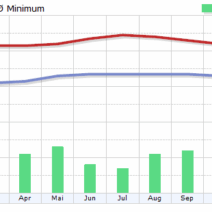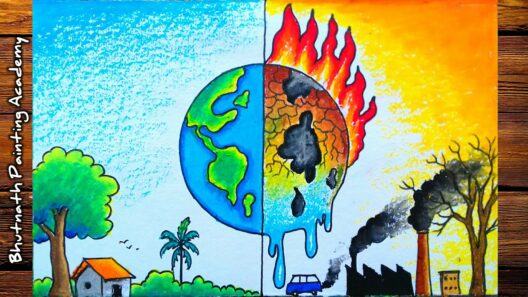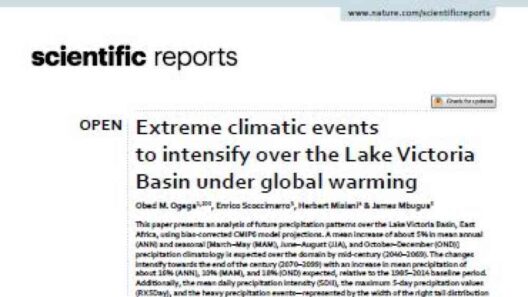The year 2025 presents a pivotal juncture for the global climate. It compels us to deeply scrutinize the multifaceted challenges inherent in climate change, which have increasingly morphed into urgent crises. So, what are the major issues of climate change in 2025? Can humanity rise to the occasion and address these concerns with resilience and innovation, or will complacency overshadow our collective endeavor? This playful yet pressing question forms the crux of our examination, as we navigate the intricate web of climate-related issues unfolding around us.
One of the most pressing challenges is the escalation of global temperatures, which impacts ecosystems and human health. The Intergovernmental Panel on Climate Change (IPCC) projects that without aggressive intervention, we may witness a rise in global average temperatures by 1.5 to 2 degrees Celsius above pre-industrial levels by the end of the decade. This slight elevation may seem inconsequential, yet it can unleash severe repercussions—freak weather patterns, diminished crop yields, and intensified natural disasters, to name a few. Regions that are already vulnerable face existential threats, leading one to ponder: which communities will be left to adapt amidst such a grave predicament?
Furthermore, the phenomenon of sea-level rise poses an existential threat to coastal cities and island nations. Melting glaciers and polar ice caps contribute to this gradual yet relentless encroachment of saltwater into freshwater ecosystems and inhabited lands. By 2025, it is anticipated that millions will be displaced from their homes, resulting in climate refugees—a newfound classification in the realm of human migration. This predicament raises critical questions about resource allocation, humanitarian aid, and geopolitical stability. How are nations preparing to accommodate these significant influxes of displaced populations?
Another considerable challenge arises from the degradation of biodiversity and its contributions to ecosystem stability. By 2025, it is projected that a substantial proportion of Earth’s flora and fauna will face elevated levels of extinction risk. Biodiversity loss diminishes resilience against climate impacts and undermines the intricate symbiosis within ecosystems that sustain life. The demise of a single species can set off a domino effect, disrupting food chains and degrading natural resources. Are we prepared to confront the ramifications of a world with diminished biodiversity, or are we heading toward an irrevocable tipping point?
In tandem with biodiversity loss is the persistent issue of deforestation, much of which is driven by human activity. The carbon sequestered in forests acts as a crucial buffer against climate change. As forests are razed to make way for agriculture or urbanization, we exacerbate carbon emissions while simultaneously undermining natural habitats. The forest conservation movement must gain momentum to reverse this trend. Will innovative strategies in sustainable agriculture and forestry practices, such as agroforestry, be enough to mitigate this persistent threat?
The socio-economic dimensions of climate change also cannot be overlooked. By 2025, it is anticipated that low- and middle-income countries will be the most severely impacted due to their limited adaptive capacity. Economic disparity exacerbates vulnerability; those with the least resources often bear the brunt of climate impacts. Furthermore, access to clean water, food security, and energy availability will become increasingly precarious. As food production systems falter and water scarcity escalates, can we develop equitable solutions that ensure that all layers of society are afforded the resources they require for survival?
Innovations in renewable energy technology offer a glimmer of hope, yet challenges remain. The transition to sustainable energy sources must accelerate in order to meet international climate goals. By 2025, renewables such as solar, wind, and hydroelectric power must become the preferred energy sources globally. However, the deployment of these technologies is hindered by infrastructural shortcomings, regulatory hurdles, and financial limitations. How can both public and private sectors incentivize investments in renewable energy technologies while ensuring that energy remains accessible and affordable?
Moreover, the discourse around climate change is increasingly intertwined with political and ethical dimensions. Climate justice—a concept that highlights the disproportionate impact of climate change on marginalized communities—will be a significant focus by 2025. Advocates argue that solutions should not only prioritize emissions reductions but also address inequities in climate vulnerability. The question thus arises: how can we ensure meaningful participation of all stakeholders in climate governance, particularly those historically excluded from the decision-making process?
As we approach 2025, the necessity for integrative and collaborative approaches becomes clearer. The array of climate challenges cannot be tackled in isolation; holistic and multi-disciplinary frameworks are essential. These must hinge upon scientific innovation, adaptive policy, and community engagement to foster resilience at every level. Whether through enhancing existing technologies or fostering grassroots movements, the question remains: can we forge a collective path forward that aligns human progress with environmental sustainability?
In conclusion, the issues posed by climate change in 2025 are not merely environmental concerns; they permeate every facet of society, governance, and economic structures. Addressing these challenges requires urgent attention, innovation, and cooperation. Each of us holds a piece of the puzzle. As we reflect on the serious implications of our actions today, let us ask ourselves: are we ready to confront the climate crisis head-on, or will we succumb to the complacency that has plagued past generations? Each moment is an opportunity for change; the time to act is now.








